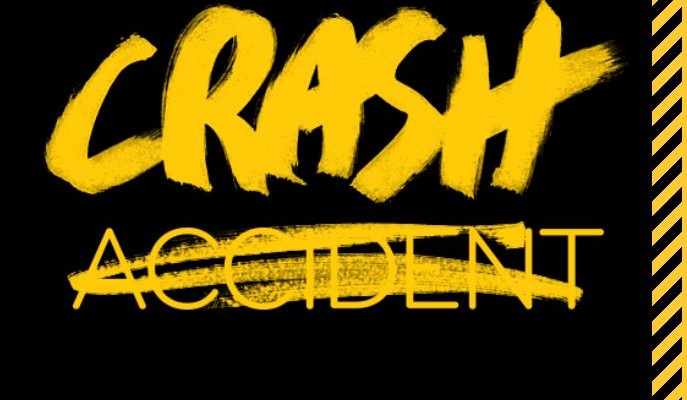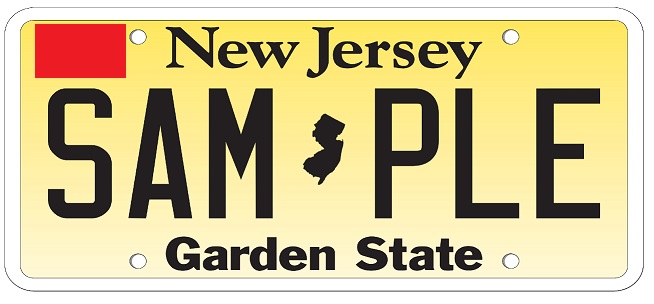Category Archive: Safe Driving

“5 to Drive” Rules To Keep Teen Drivers Safe
October 23, 2015
It’s Teen Driver Safety Week and this year’s theme is “5 to Drive”, referring to five things teen drivers need to be aware of when they drive. The five things are practices by teens that are the most common cause of teen crashes or that increase the chances of greater injury or death in a crash. The five rules that teens must obey if they want to live through a trip on the road are:
- No alcohol
- No cell phone use while driving
- No driving or riding without wearing a seat belt.
- No speeding.
- No extra passengers.
We’ve written about most of these before in a column on the most common type of teen crash. The only thing not covered in that column was the extent to which alcohol and other drugs contribute to teen crashes.
While alcohol use by teens has gone down significantly over the past few years, it still plays a big role in teen crashes. Of all the teen drivers (ages 15-20) killed in 2013, 29 percent had a BAC level of .01 or higher. Among those killed with measurable amounts of alcohol in their system, 82 percent had a BAC level of .08 or higher. More and more research studies show that other drugs along with alcohol are also showing up among drivers involved in crashes.
Cell phones, whether they’re being used for phone calls, texting, or social networking, present a significant danger to drivers of all ages but are especially dangerous for inexperienced teen drivers. Studies show that even hands free cell phone use is distracting.
Among young people aged 16-20 killed in crashes in 2013, more than half (55%) weren’t wearing seat belts. Fifty percent of the teen drivers killed in 2013 were unrestrained. Among teen drivers who survived a fatal crash, 85 percent were wearing seat belts. Studies show that teens who might otherwise wear a seat belt when driving themselves, don’t wear seat belts when riding as a passenger of another teen driver.
Speeding is responsible for approximately one-third of all fatal crashes in the US every year. For drivers under the age of 20 who were involved in fatal crashes, 35 percent of the males and 21 percent of the females were speeding. Speeding reduces the time a driver has to react to an emergency situation ahead and it increases the crash forces. Many teens learn, to their horror, that it’s impossible to keep a speeding car on the road in a curve.
Cell phones aren’t the only distraction for teen drivers. According to a 2012 study by the AAA Foundation For Traffic Safety, a teen driver’s risk of involvement in a deadly crash increases by 44 percent with one teen passenger in the vehicle. The risk doubles with two teen passengers and quadruples with three or more passengers. A teen driver is more likely to engage in risky behavior when one or more teen passengers are present.
Graduated driving laws were created to give teen drivers extra time to gain more driving experience by outlawing the five practices that contribute to so many teen crashes. However graduated driving laws for teens aren’t equal in all states. Parents should be aware of the laws in their state and, if their state’s graduated driving laws don’t go far enough to limit the distractions that teens face, parents can enact their own graduated driving license laws through the use of a teen driving contract.

IIHS Updates List Of Safest Used Cars For Teens
October 9, 2015
The Insurance Institute for Highway Safety (IIHS) has updated their list of the safest used cars for teens and, with manufacturers creating more and more safer vehicles, the list is 50 percent larger than last year’s list.
The IIHS found last year that teens were more likely to drive cars that were smaller, older, and less safe than vehicles driven by their parent’s generation. To guide parents and teens toward safer vehicles, the IIHS published their first list of safest used cars for teens last year.
The criteria for choosing the safest used cars hasn’t changed. Those criteria are:
- Stay away from high horsepower vehicles. Teens don’t need to be tempted to test the limits.
- Larger, heavier vehicles offer more protection in a crash. Small, light vehicles such as smart cars and mini-coopers weren’t considered for the list.
- Electronic Stability Control (ESC) is required. ESC prevents over-correction and helps keep the car on the road in curves and on slippery roads. ESC is now mandatory in all vehicles built since 2012.
- Vehicles should have the best safety rating possible. Vehicles should score “good” ratings in moderate overlap front crash tests, acceptable ratings in side tests and receive four or five stars from the National Highway Transportation Safety Administration (NHTSA).
The safest used cars list is broken into two categories;
- Best Choices – Safest used cars under $20,000
- Good Choices – Safest used cars under $10,000
The IIHS based their price estimates on Kelly Blue Book values as of September 1st of this year.
Read More: Safe and affordable: updated used vehicle recommendations for teens

There’s No Such Thing As A Traffic Accident!
August 26, 2015
There’s no such thing as a traffic accident! We have written on this before but it bears repeating; especially for young drivers. Before anyone tries to tell us we’re crazy, let’s take a look at the meaning of the word accident.
The dictionary defines an accident as “an unfortunate incident that happens unexpectedly and unintentionally, typically resulting in damage or injury.”
An accident is a situation that we have no control over. If you’re struck by lightning or a tree limb falls and hits you in the head, that’s an accident. However, where there’s a motor vehicle crash, it’s rarely an accident; it was caused.
Motor vehicle crashes are caused when one or more drivers make a poor choice and that poor choice leads to a crash. Driving too fast to safely react to road conditions ahead or running a red light are examples of the poor choices that drivers make and they aren’t accidents; they are deliberate choices made by the driver. Even allowing yourself to be distracted and not paying attention to the road ahead is a choice that a driver makes and it can easily lead to a crash but not to an accident.
As drivers, we have choices and we can either choose to drive safely, pay attention to the road ahead, and use caution when potentially dangerous situations come up ahead. Or, we can choose to speed, run red lights, send text messages, or just allow our minds to wander and not pay attention to what may be ahead of us. The crash may be unintentional but the driver’s poor choice caused it. As drivers, the choices are ours and ours alone and can’t be blamed on some outside force.
Of course, if you’re driving safely and obeying all the traffic laws and someone hits you, from your perspective, the situation would qualify as an accident but, for the other driver who hit you as the result of a poor choice he or she made, it wasn’t an accident at all.
So what about bad weather events? Can’t bad weather cause accidents? It all depends on how the driver reacts to the bad weather. Did he or she continue to drive at normal speeds in a heavy fog or fail to realize that there may be patches of slick ice on the road? Did the driver slow down or get off the road to wait for a heavy rain storm to pass? Weather can cause accidents but, more often than not, it was the poor choice of how the driver reacted to the bad weather that causes a crash.
An organization called Families for Safe Streets is calling for people to stop using the word accident when it comes to motor vehicle crashes. The organization is made up of people who have lost loved ones in motor vehicle crashes and they want to spread the word that they didn’t lose their loved one due to an accident. They want it known that a driver made the choice to take the actions that led to the death of their loved one.
Families for Safe Streets is conducting a drive to educate people that there are no motor vehicle accidents and the word “crash” should be used instead. If you agree, they’re asking you to sign a pledge and help spread the word to stop using the word accident when motor vehicles are involved.
To sign the pledge, go to: I will not call traffic crashes “accidents.” I will educate others about why “crash” is a better word.

Dramatic Evidence That GDL Laws Work
July 30, 2015
More and more evidence has been coming in over the past few years that GDL (Graduated Driving License) laws work to save lives among teen drivers. Now the State of Connecticut has produced evidence that their GDL law has dramatically reduced the teen death rate in that state.
A report released in May of this year by the Connecticut DMV Center for Teen Safe Driving, credited Connecticut’s strict GDL laws for the fact that, in 2014;
- “For the first time in 12 years, no 16- or 17- year-old passengers died in a crash of a vehicle driven by another 16- or 17- year-old driver in Connecticut.”
- “There was only one death among the 16- or 17- year-old drivers who were governed by the state’s GDL program.”
That’s an incredible accomplishment!
In addition, a report published in 2011 by the Connecticut Children’s Medical Center, stated that Connecticut’s GDL law can be credited with a significant decrease in fatalities among novice teen drivers. It also said that, among the fatal crashes that did occur, half were caused by teen drivers who were in violation of Connecticut’s GDL law.
Prior to 1997, the state didn’t require teens to have a learner’s permit or any specific training requirements before applying for an operator’s license. In 1997, the state passed a law requiring a learner’s permit along with home training for six months or a four month driver’s education program before applying for an operator’s license. However, evidence showed that the new requirements did little to reduce the death rate among teen drivers.
In 2003, the state passed the first GDL laws that set curfew and passenger restrictions for teen drivers. Those laws took effect in 2004. In 2008, after a series of high-profile teen crashes, the state beefed up their GDL laws even more by further strengthening the curfew and passenger restrictions, increasing the requirements for training, and increasing penalties, including the nation’s first 48 hour license suspension for teens charged with any traffic violation. The state also required a two-hour joint parent-teen information session for any 16 or 17 year old applying for a license.
The state vigorously enforced the GDL laws among teen drivers and, ten years after the enactment of the first GDL laws in 2004, the results show:
- A 64 percent reduction in the deaths of 16 and 17 year-old drivers who are governed by the state’s GDL program.
- A 13 percent decline in the number of crashes for the 16 and 17 year-old age group in 2013 compared to the previous two years.
- The Children’s Medical Center report says credits the state’s GDL laws – not maturity, for the dramatic reduction in the teen driver death rate.
The Insurance Institute for Highway Safety lists Connecticut among the top states for effective GDL laws based on the permit age of 16 and the zero teen passenger restrictions.
If other states were to follow this model, the teen driving death rate could be reduced dramatically nationwide. Regardless of what their particular state law says, parents can increase the safety factor for their own teen by setting and enforcing their own strict GDL limits.
Read more: Teen Driver, Passenger Fatalities at Historic Lows, According to New DMV Report Released Today

Have Red Decals Reduced Crashes For Teen Drivers? – It Depends!
July 1, 2015
A newly published study on the use of red decals by teen drivers in New Jersey seems to contradict a study published last year but that depends on the type of license the teen driver holds.
In 2010, New Jersey enacted a law requiring that teen drivers display a red decal in the upper left hand corner of the vehicle license plate. The law was designed to allow law enforcement officers to identify newly licensed teen drivers more easily in order to enforce compliance with the state’s graduated driver license laws (GDL).
Under the New Jersey GDL laws, there are two different permit phases that require a new driver to practice with an accompanying adult driver for at least six months before applying for a probationary license. A teen with a probationary license must drive unsupervised for at least one year and be at least 18 years of age in order to qualify for a basic driver’s license
Under the GDL laws, teen drivers with either a permit or a probationary license:
- must be accompanied by a licensed driver over the age of 21 during the permit phase,
- are prohibited from driving between the hours of 11:01 p.m. and 5:00 a.m.,
- are prohibited from using hand-held or hands-free cell phones or any other electronic devices.,
- are limited to the number of passengers they can carry, and
- must wear seat belts.
The new study published in the journal Injury Prevention attempted to find out if the red decals had any effect on the crash rates of teen drivers during the permit phase. Just like the earlier study, using driver license information and the police reported crash database, they did a comparison of teen crash rates during the four years before the law went into effect with the crash rate in the two years after enactment of the law.
The surprise was that there seemed to be no difference in the crash rate for permitted drivers before or after the law took effect.
The previous study found an overall reduction of 9.5 percent in crash rates for teens after the law went into effect.
So, why the difference? The new study looked strictly at the crash rate for permitted drivers. Drivers with a permit must be accompanied at all times by a supervising driver over the age of 21. Under New Jersey law, if a permitted driver commits a traffic offense, both the teen driver and the supervising driver are held responsible.
The researchers feel that the reason the crash rate for permitted drivers didn’t change was that a permitted driver under the supervision of an adult driver is going to drive more carefully anyway, whether or not a red decal is attached.
The real change to the crash rate was in unsupervised drivers during the probationary license phase. Those probationary drivers experienced a significant drop in crash rates after the requirement for red decals went into effect. Researchers feel the reason for the difference is that, unlike teen drivers in other states, probationary drivers in New Jersey tended to drive more carefully and were less likely to disobey the GDL laws because the red decals made them more visible to police.
Read more: Branding Teen Drivers As Newbies Doesn’t Prevent Crashes
